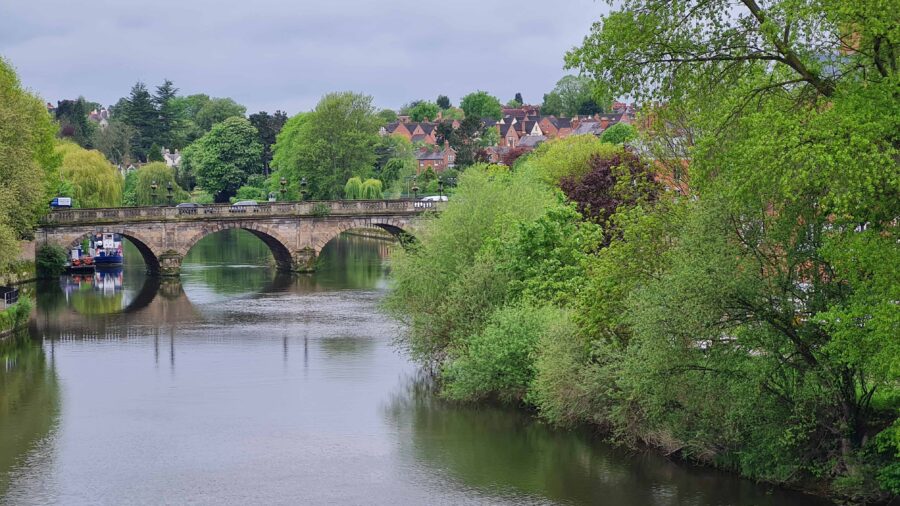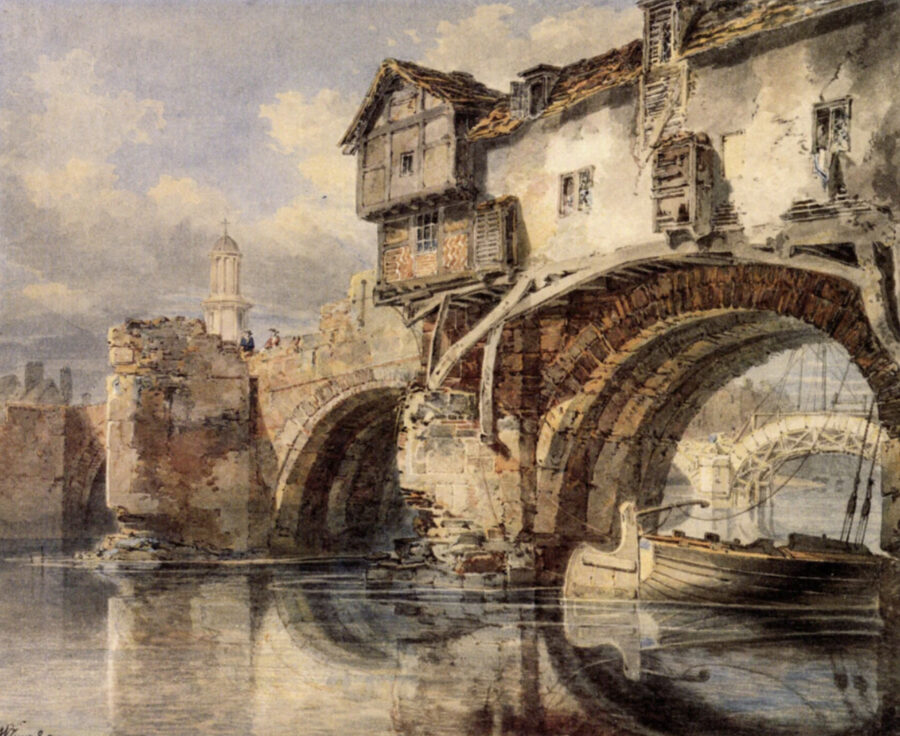Turner In Shropshire

JMW Turner visited Shrewsbury in 1794 and painted the old Welsh bridge. It appears from the painting that the new bridge (pictured above) was under construction at the time. In the background towering above is the new St Chads built two years before Turner painted this bridge.

J.M.W. Turner and His Artistic Exploration of Shropshire
Joseph Mallord William Turner, a master of light and landscape, left an indelible mark on British art through his breathtaking depictions of natural and architectural beauty. His visit to Shropshire in 1794, notably his painting of the Old Welsh Bridge in Shrewsbury, is a highlight of his early career. However, his artistic journey in Shropshire encompasses several other locations, each rich with history and character.
Shrewsbury and the Old Welsh Bridge
Turner’s painting of the Old Welsh Bridge, created during his visit in 1794, serves as a poignant example of his fascination with the interplay between nature and human architecture. The bridge itself, a medieval structure, was an essential crossing over the River Severn, linking Shrewsbury to surrounding regions. In the backdrop, the newly constructed St. Chad’s Church stands tall, a striking representation of the evolving landscape. The juxtaposition of the Old Welsh Bridge and the construction of the new bridge underlines the tension between tradition and modernity, a theme Turner frequently explored.
The Wrekin
Another notable site that Turner captured during his time in Shropshire is The Wrekin, a prominent hill that rises to 407 meters. Known for its stunning views, The Wrekin offers a dramatic landscape that Turner adeptly rendered in his paintings. His works often highlight the rolling hills and expansive skies, capturing the essence of the Shropshire countryside. The interplay of light and shadow on the hill’s surface showcases Turner’s ability to evoke emotion through natural forms.
Ironbridge
Turner also painted Ironbridge, a UNESCO World Heritage Site renowned for its iconic cast-iron bridge, built in 1779. This engineering marvel symbolized the Industrial Revolution and was pivotal in transforming transportation and trade in the region. Turner’s depiction of Ironbridge reflects not only its architectural significance but also the surrounding natural beauty of the River Severn and the lush landscape. His focus on the bridge and its environment illustrates the harmony and conflict between industrial progress and nature—a recurring theme in Turner’s body of work.
Ludlow
Ludlow, another picturesque town in Shropshire, is known for its medieval architecture and rich history. Turner painted scenes of Ludlow Castle, capturing the formidable structure set against the backdrop of the picturesque countryside. His ability to depict the intricate details of the castle alongside the lush greenery surrounding it showcases his deep appreciation for historical landmarks and their environments. The interplay of light across the stone walls adds a dramatic effect, enhancing the viewer’s experience of the scene.
Stokesay Castle
Stokesay Castle, an English Heritage property in Shropshire, is another notable site Turner captured. This well-preserved manor house is a prime example of medieval architecture, featuring stunningly ornate details. Turner’s paintings of Stokesay Castle reflect his fascination with its historical significance and aesthetic beauty. The surrounding landscape, characterized by rolling hills and vibrant greenery, complements the structure, creating a harmonious balance between man-made and natural beauty.
The River Severn
The River Severn itself, meandering through Shropshire, served as a crucial source of inspiration for Turner. Many of his works feature the river’s tranquil waters, reflecting the ever-changing skies and landscapes. Turner’s ability to capture the river’s shimmering surface and the surrounding foliage highlights his mastery of water and light. The River Severn’s beauty, coupled with its historical importance as a trade route, is integral to Turner’s portrayal of Shropshire’s landscape.
The Shropshire Hills
Turner was also inspired by the Shropshire Hills, an Area of Outstanding Natural Beauty (AONB). These rolling hills, characterized by their dramatic landscapes and diverse flora and fauna, provided ample material for Turner’s artistic explorations. He captured the changing seasons and moods of the hills, from vibrant greens in spring to rich autumn hues, reflecting his deep connection to the natural world.
The Impact of Turner’s Shropshire Paintings
Turner’s exploration of Shropshire reflects his ability to capture the essence of a landscape, intertwining natural beauty with historical context. His works serve not only as artistic expressions but also as historical documents that reveal the changes occurring in British society during the late 18th and early 19th centuries.
The paintings he created in Shropshire are significant for several reasons. They document the architectural heritage of the region while simultaneously addressing the broader themes of change, continuity, and the relationship between humanity and nature. Through his brushwork, Turner invites viewers to engage with the landscape on a deeper level, encouraging appreciation for both its beauty and its historical significance.
Conclusion
J.M.W. Turner’s artistic journey through Shropshire, marked by his paintings of the Old Welsh Bridge, The Wrekin, Ironbridge, Ludlow, Stokesay Castle, and the River Severn, encapsulates a pivotal period in British art history. His ability to convey the intricate relationship between architecture and nature, tradition and progress, continues to resonate with audiences today. Turner’s legacy lives on, reminding us of the beauty and complexity of the landscapes that shape our cultural heritage. As we explore these sites, we are invited to reflect on their historical narratives, enriched by Turner’s artistic vision.
